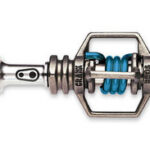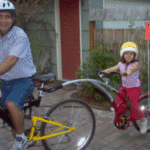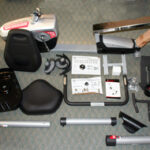Fixed gear bikes –fixies — are trending. Between the current hipster fascination with these machines and the release of the movie “Premium Rush” (about a bicycle messenger being chased by bad guys) you’re seeing more and more on the road. Here’s why you should consider adding one to your quiver of bikes.
Fixies are single-gear bicycles with no freewheel so they cannot coast. The rear wheel and pedals move in unison meaning constant pedaling is required while the bike is moving. Traditionally fixed gear bikes were brakeless, so to slow down and stop one decreased pedal speed or performed a skid stop. These days most models for the road feature brakes.
While I’m not in a position to comment on the cultural significance of fixed gear bike riding, from a cycling performance perspective there’s a lot of benefit to riding one. Regularly training on a fixie can significantly improve one’s pedaling technique, leg strength and overall endurance.
Pedaling Technique
If you’re looking to maximize pedaling efficiency, a fixed gear bike is the ultimate skill builder. The constant pedaling required trains the legs to maintain a smooth stroke (the French call this ‘souplesse’) and teaches one to apply power through pedal dead spots. On hill descents the rider is forced to spin at a high rate which can improve one’s maximum pedal cadence.
Leg Strength
The quick and efficient shifting of modern bikes has made gearing down for a climb or small hill almost automatic. With a fixed gear bike the rider must use leg power on a climb instead of relying on the gearing’s mechanical advantage. The net effect is stronger legs and better climbing ability that will payoff big when you hit the hills on your geared bike.
Endurance
Most road cyclists end up coasting at least 20% of the time during a ride. With a fixed gear bike pedaling is constant, so leg muscles are working continuously. Not only will this improve endurance, but when you return to your regular bike you’ll be less likely to coast.
So what about drawbacks to a fixie? Most have to do with getting used to the constant peddling. Descending steep hills on a fixed gear bike can be treacherous for the novice. The most important rule is to resist the natural tendency to stop peddling when cadence gets too high as this can lead to a dangerous loss of control or a nasty pedal slap on the calf. Cornering can also take some getting used to as the pedal can hit the ground on the down stroke in tight corners causing a loss of control.
If you’re interested in a fixed gear bike but the thought of not being able to coast puts you off, you can get a “flip-flop” hub. This is a double-sided hub that is equipped with a fixed gear on one side and freewheel sprocket on the other. If you find yourself in a particularly hilly area or getting tired, just flip the wheel and use the freewheel gear.
Maybe the best thing about fixed gear bikes is the riding experience. When I ride a fixie I find it requires a focus and road awareness that really keeps me in the moment and connected with the bike. It’s a great feeling. Give it try. Like me, you’ll quickly become a fan of fixed gear cycling.




